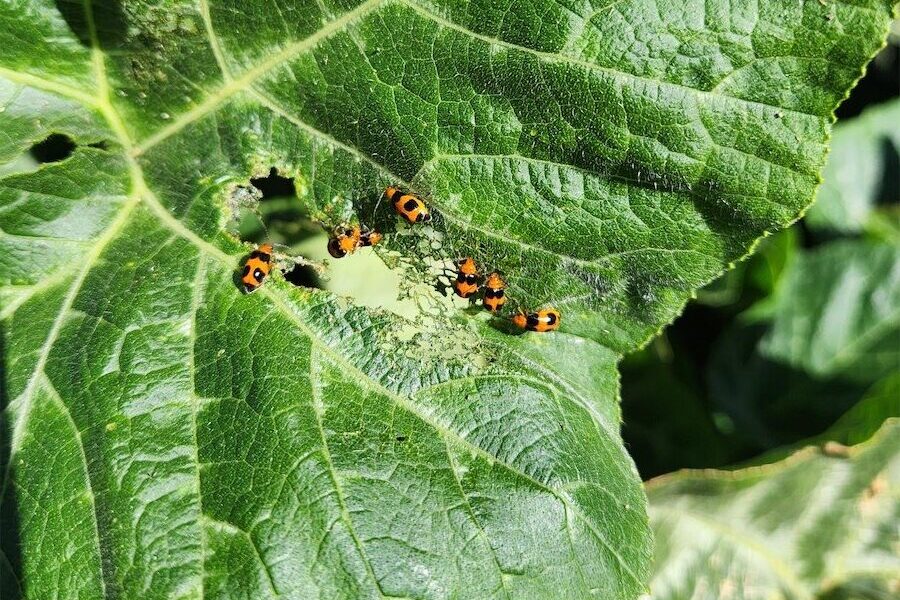This has been the year of pests and diseases, writes gardening columnist JACKIE WARBURTON.
There are fungal diseases that I’ve never seen before that are around because of the wet weather of the past few years, which looks to be continuing.

We have had a plague of different types of beetles from scarab beetle to citrus beetle and now I’ve seen, in great proportions, the pumpkin beetle. There are two types of pumpkin beetles. The ones with black markings on their backs are seen in our region. This beetle targets cucurbits in the vegetable patch such as pumpkins, cucumbers, melons and zucchinis.
It defoliates leaves in no time and damages the roots, stems and flowers. Remove it the moment it’s seen by dropping them into soapy water. Neem oil or insecticide with Spinosad as its main ingredient, such as Success Ultra, will work, and both products are all-natural.
Companion planting helps to repel beetles. The best-known plants to use are basil, borage or marigolds.
To keep this pest away for next season, plant garden beds with a high-nitrogen, green manure crop in the winter to balance the soil.
Clean up the spent crop in autumn, which will give the beetles nowhere to hide over winter and they’ll move on.
The cucurbits are also susceptible to powdery mildew at this time of the year. It’s a white powder look that can easily be seen on the leaf.
Large infestations should be cut away from the plant. Watering the soil and not the leaves prevents the mildew from spreading to other plants such as strawberries, dahlias and other vegetables.
An organic spray of eco-fungicide will work. Remove old leaves from plants if needed to increase the air flow to reduce fungal infection reoccurring.

CARPOBROTUS, which is flowering now, is a native plant that grows with little care.
Although it is not endemic, it grows here and is not bothered by frosts. It is a prostrate creeping succulent and grows well over a wall or will spread along the ground.
If there is a large area to cover, two plants a square metre is a cost-effective way for covering a large area in a little time.
The main available flower colours are a magenta pink or a sweet buttery yellow. Both grow well outdoors.
If there is a sheltered spot in the garden or glasshouse, try Carpobotus mellei, which has a larger, fatter leaf and more blue, and a sweet pale pink flower.
Other low-growing Carpobrotus plants to try in the garden are Aptenias, Delospermas or Disphyllum Sunburn. They all have no problems with frosts and are drought tolerant when established.
Like all succulents, they need good drainage, so add a small amount of sharp sand to the hole before planting.
IT’S the last chance to plant autumn bulbs such as Colchicums or Sternbergers. When planting, a good guide is to plant bulbs twice as deep as the bulb is tall and the same distance apart. Bulbs can be planted en masse to give a better floral display.
Jottings…
- Sow more winter seeds to plant out in March.
- Fertilise autumn bulbs that are starting to grow.
- Fork around new plants to ensure the soil is not compacted.
Who can be trusted?
In a world of spin and confusion, there’s never been a more important time to support independent journalism in Canberra.
If you trust our work online and want to enforce the power of independent voices, I invite you to make a small contribution.
Every dollar of support is invested back into our journalism to help keep citynews.com.au strong and free.
Thank you,
Ian Meikle, editor






